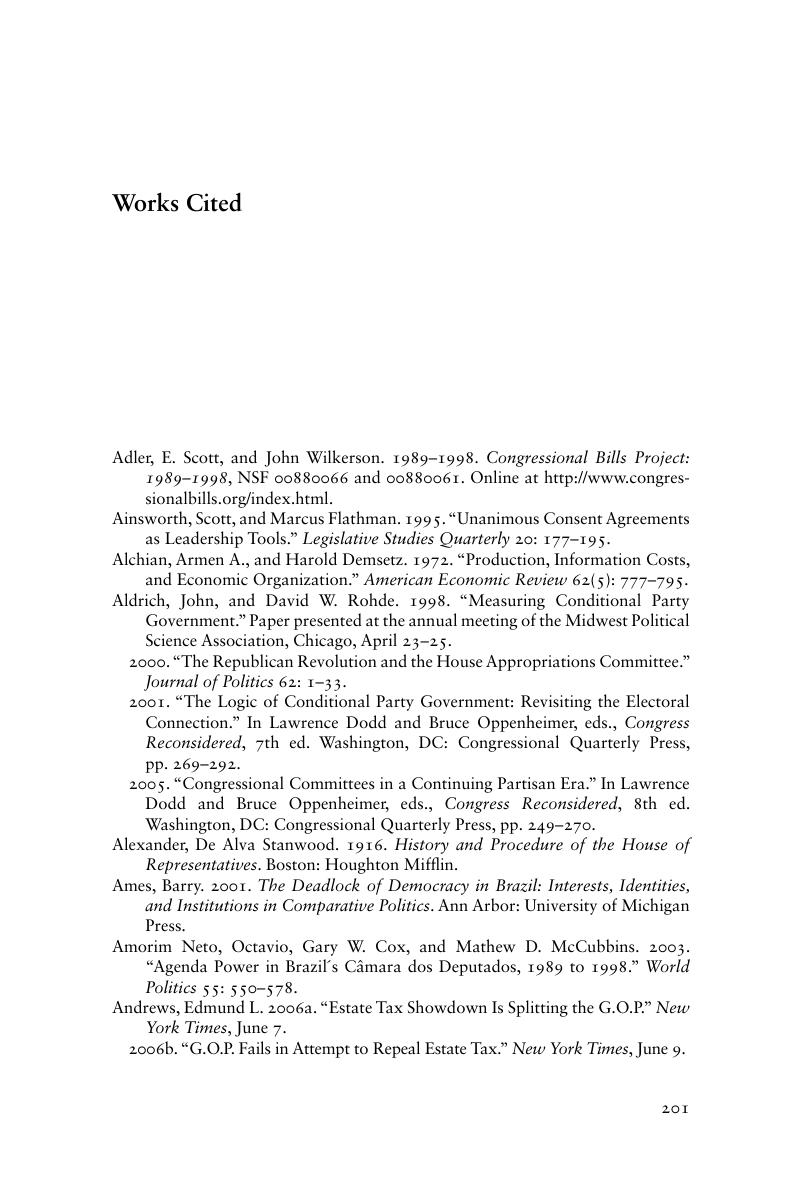Book contents
- Frontmatter
- Contents
- List of Tables and Figures
- Preface
- PART I COSTLY CONSIDERATION
- PART II SENATE PROCEDURE AND CONSIDERATION COSTS
- PART III TESTING THE COSTLY-CONSIDERATION THEORY
- Appendix A Relaxing the Model's Assumptions
- Appendix B Last Actions and Coding Amendment Disposition
- Works Cited
- Index
- References
Works Cited
Published online by Cambridge University Press: 07 October 2011
- Frontmatter
- Contents
- List of Tables and Figures
- Preface
- PART I COSTLY CONSIDERATION
- PART II SENATE PROCEDURE AND CONSIDERATION COSTS
- PART III TESTING THE COSTLY-CONSIDERATION THEORY
- Appendix A Relaxing the Model's Assumptions
- Appendix B Last Actions and Coding Amendment Disposition
- Works Cited
- Index
- References
Summary

- Type
- Chapter
- Information
- Agenda Setting in the U.S. SenateCostly Consideration and Majority Party Advantage, pp. 201 - 214Publisher: Cambridge University PressPrint publication year: 2011



